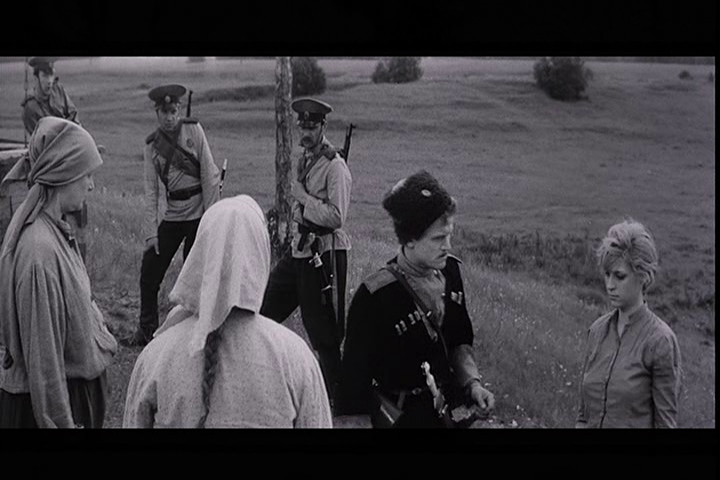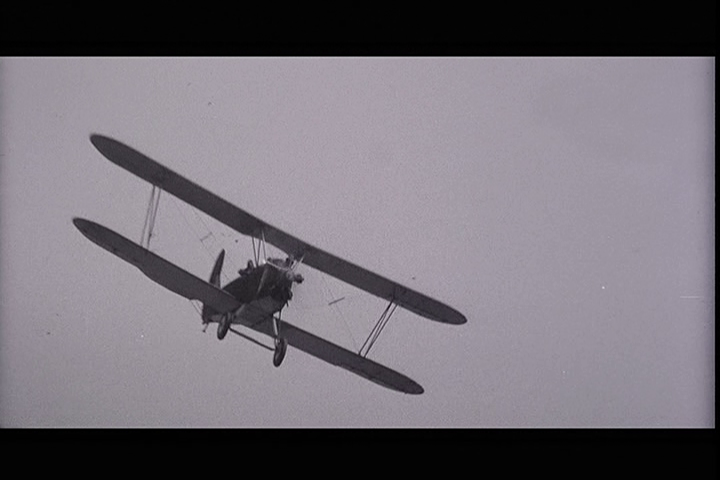The Red and the White (Csillagosok, katonák), directed by Miklós Jancsó, was recommended to me by some fellow film buffs with high marks in both the ‘war movie’ and ‘anti-war’ genres. It fits both. The film is Hungarian, and summarizing the plot is difficult because there is little plot.
The year is 1919, Hungarian Communists ‘Reds’ are attempting to support the Russian Bolsheviks’ defeat of the Czarists, the “Whites”. Historically, Americans are quite distanced from this history, and the brutality of the rise of the Soviet state and its tyranny and cruel thuggery are noted as passing footnotes in our history books, if they are noted at all. To see it dramatized is to enter a wholly foreign world.
Near the Volga River, a monastery and a field hospital constantly flip sides, cossacks and infantry roam at will across the otherwise beautiful landscape, leaving sorrow and death in their wake. Scores of prisoners are marched to and fro, executed, or turned loose to be hunted as sport. In the end, there is no resolution, but the futility of war is displayed plainly and rather frankly. Of course, propaganda films push a position, and war is not really futile, and there is not truth to the old liberal saying that “violence never solved anything.” The reality is violence has solved a lot. Be wary of swallowing an agenda.
I had to view this film several times to form an opinion, and even now I don’t know if I can agree with the more academic film viewers lauding its artistry and message (I am critical and suspicious of academic pointy heads). Sure, its a well-made piece of cinematography, but so were other films of the day. The craft carried the film a little way for me and I love some of the scenes for their visuals. I can see the minimalism and give an arrogant nod to the nose-up artsy-ness. But here’s the problem with self-absorbed artists – they make works that are tedious and self-absorbed. I am supposed to recognize the artfulness of this film’s attempts to show the dehumanization of war, but it just comes across as silliness. A theater of art students would pretend to get it and spend all night talking about it as they drank themselves into a stupor, but for the remaining 99.995 percent of the world’s population, this movie is just painful. The lack of a real plot and of any characters that one can identify with don’t help its grinding monotony. If I didn’t have an interest in history and firearms, I’d probably have not made it through the film. And I claim to be a creative type!
Its garbage.
Here are some comments from fellow viewers at IMDb to flesh out the feel of this film.
“…it moves at a continuous ceremonious pace, like the melody of a slow march…”, and ” Here, however, there must be only half-a-dozen lines spoken which are not orders. It’s hard to explain why all this should not be highly boring; I guess either you are fascinated by it, or you aren’t.” – Levana Taylor, Chicago
“Sparse, somewhat dream-like war film that will either have you yawning in your seat or sitting up and paying attention.” – K. S. Kincaid, Vietnam
“It’s very unusual and not geared to all tastes . . . There is no plot. You simply follow one group of soldiers until something happens and you follow another group. You feel sympathy for the soldiers; until they commit a heinous act, and you hate them.” -R. Duncan, California
My own description of this film would be men and horses running this way, then that way, then shooting, then running, this way, then that way. Ad infinitum.
If you like guns, and many of us get into these films because we want to see our firearms in context, the you will enjoy Mosin Nagants by the score, all properly deployed with the proper cruciform bayonets. There are Cossack rifles, 1907 carbines, Mauser broomhandle pistols, Nagant pistols. Uniforms appear to be accurate, with the Cossacks especially detail-rich. The few aircraft in the film are early biplanes indeed, but I have a hunch they are not quite period-accurate. In 1919 aviation had come light years from just five years prior, but I think the aircraft used was a 1920s era repro. No big deal, but aviation fans will surely enjoy pegging the make and model. If you are like me, sometimes you buy a film just to see your favorite firearms, aircraft or tanks in action. This movie is full of filthy Bolshevik-era Mosin-Nagantery. But is it worth viewing just for a glimpse at the historical context of your favorite rifle? I don’t think so unless you are suffering from insomnia. But you decide for yourself.








